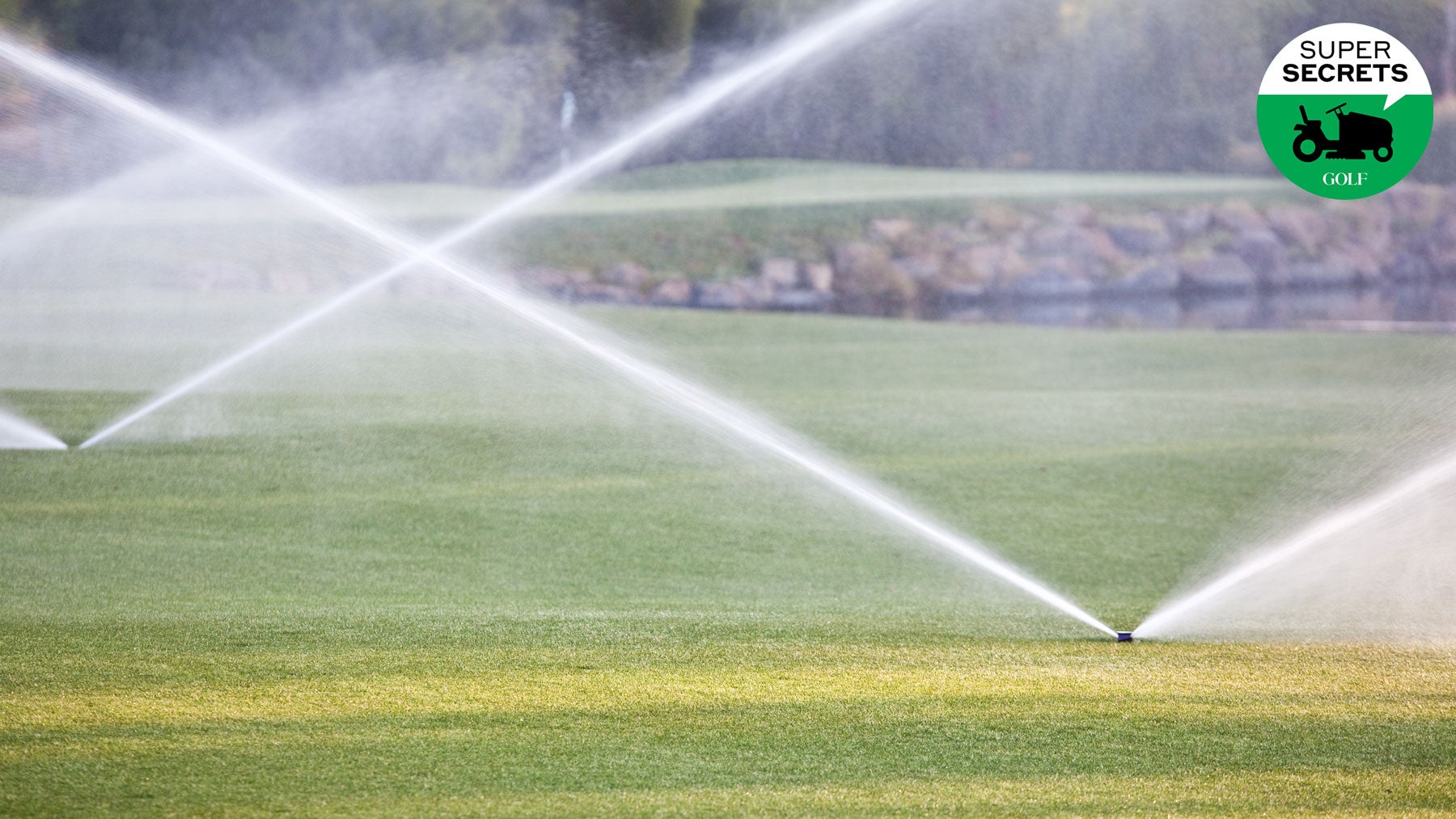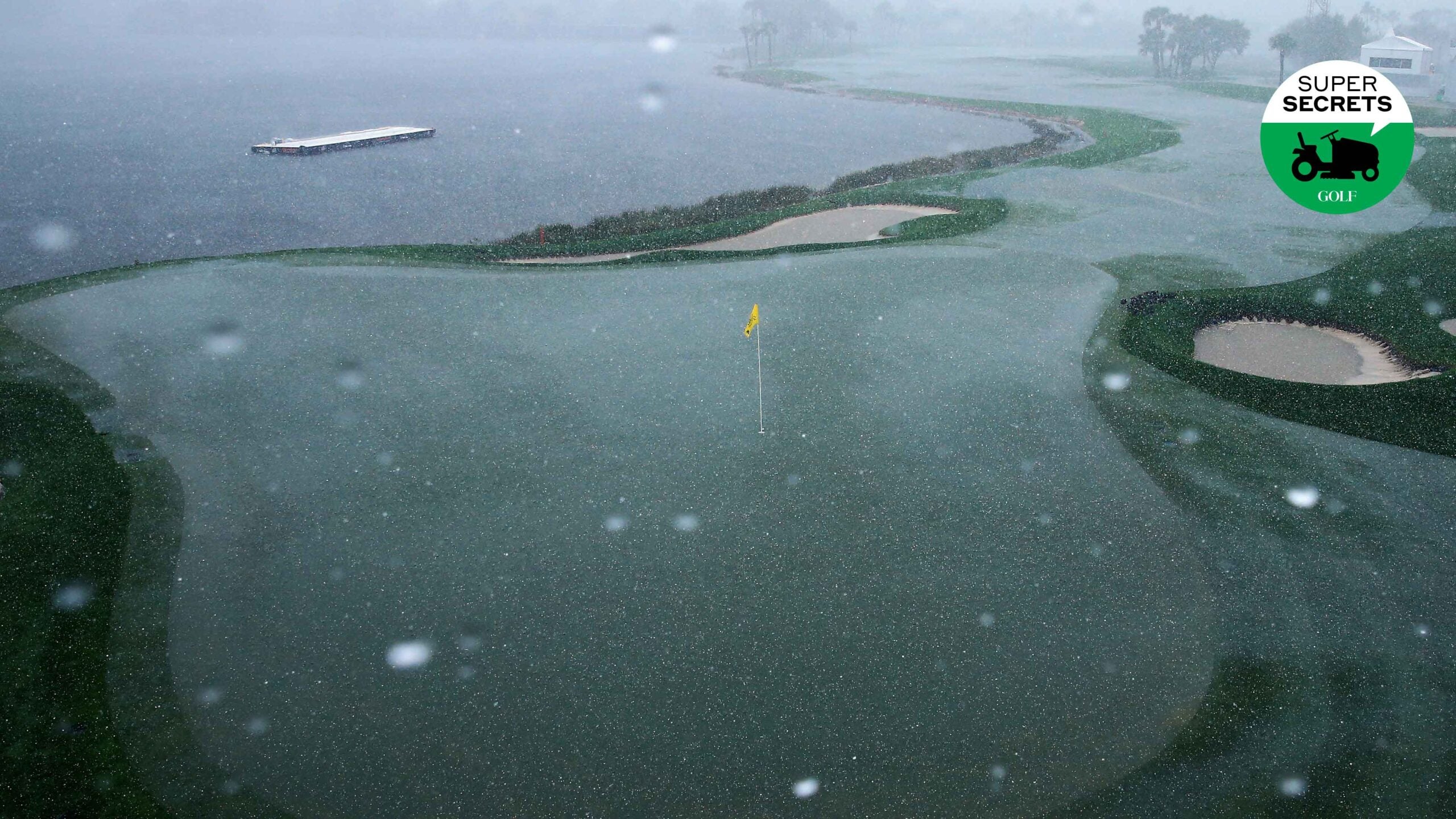5 diabolical ways superintendents can push golf courses to the edge

There is no such thing as an illegal hole location. But there are nutty ones.
getty images
Golf is a wildly addictive game that can send its adherents to euphoric heights or drive them batty with frustration.
Let’s face it. Most us are masochists, which makes us easy prey for a superintendent in a sadistic mood.
It doesn’t happen often. But every now and then — make that once a year, and at the behest of their members — greenskeepers at courses around the country indulge their inner-devil with setups so absurdly tough, it’s hard to know whether to laugh or cry.
Brandon Williams, director of agronomy at Lakehouse Resort, in San Marcos, Calif., and longtime member of the GCSAA, is one such super. For five years running, before the pandemic, on the resort’s Links at Lakehouse course, Williams staged what he billed as the Greenskeeper’s Revenge, a tournament that played like a psychedelic cross between the U.S. Open and American Ninja Warrior. Though he hasn’t held the event since lockdowns ended — the course is just too busy nowadays — Williams has not forgotten what went into the demonic preparation.
With his help, along with input from greenskeepers who’ve held similar tournaments, here’s look at the creative steps that supers take at these larkish events to ensure that scoring records don’t get broken but spirits do.
1. Hole locations
Under the Rules of Golf, there is no such thing as an illegal hole location. But there are nutty ones. Placed on severe slopes and at the teetering edge of tiers. Nudging up against the collar. For his Revenge event, Williams cut cups in all those places. He even set up a false flag, with the pin propped on the putting surface but the cup cut some 20 feet behind it. Deceptive. But at least he kept it on the green. One of his peers, Mark Patterson, superintendent at Legacy Golf Club at Lakewood Ranch and Serenoa Golf Club, in Fla., staged a revenge event with a cup cut in a green-side bunker.
2. Lightning greens
Combine healthy turf with modern maintenance equipment and a super with a gleam in their eye, and you can get greens running like a marble counter. In his most punitive moments, Patterson has pushed Bermuda greens to 13 on the Stimp. With bentgrass, he says, you get them up to 16. It’s hard to get one’s head around that number. But here’s one way to think of it. Though Augusta National doesn’t speak of Stimp readings, agronomists who have worked the Masters say the putting surfaces run at roughly 12 to 14 for the tournament.
3. Tipped out
Tiger Tees. Tournament Tees. Call them what you will, rarely put the entire footprint of a course into play. For revenge events, many greenskeepers pull the blocks back, back, until there’s nowhere farther they can go.
4. Tricked-up targets
The term greenskeeper’s revenge tends to cast the super as a Gollum-like figure, muttering and pacing in some dank place while plotting retribution. In fact, most have a hearty sense of humor. At his annual tourney at the Links at Lakehouse, Williams made mischief by ringing one hole with a toilet seat, building a sandy berm around it so golfers had to putt up and over to the cup. He set up another hole that he called Hurricane, strewn with tree branches in the fairways, as well as an “irrigation” hole, with hundreds of irrigation markers stretched across it. Patterson, for his part, has created “volcano” holes, pulling the cup liner up and establishing the turf so the hole as a gentle ramp around it — as maddening as anything in mini golf.
5. Other shenanigans
Pore over the literature (that is, trade magazines) and talk to supers, and you realize that the antics go on and on. Placing a toilet on a tee box and requiring golfers to sit on it while hitting. Cluttering fairways with mowers and other maintenance equipment. Aiming turbine blowers at the hole to blow putts away. Requiring players to hit “cross-country” to a different hole, or to navigate irrigation hoses. One of Patterson’s favorite moves is to ready sprinklers on a par-3. If you hit the green in regulation, the irrigation heads are running as you putt for birdie. If you miss the green and take multiple chips or putts on your journey, more heads turn on and the watery punishment gets worse.











